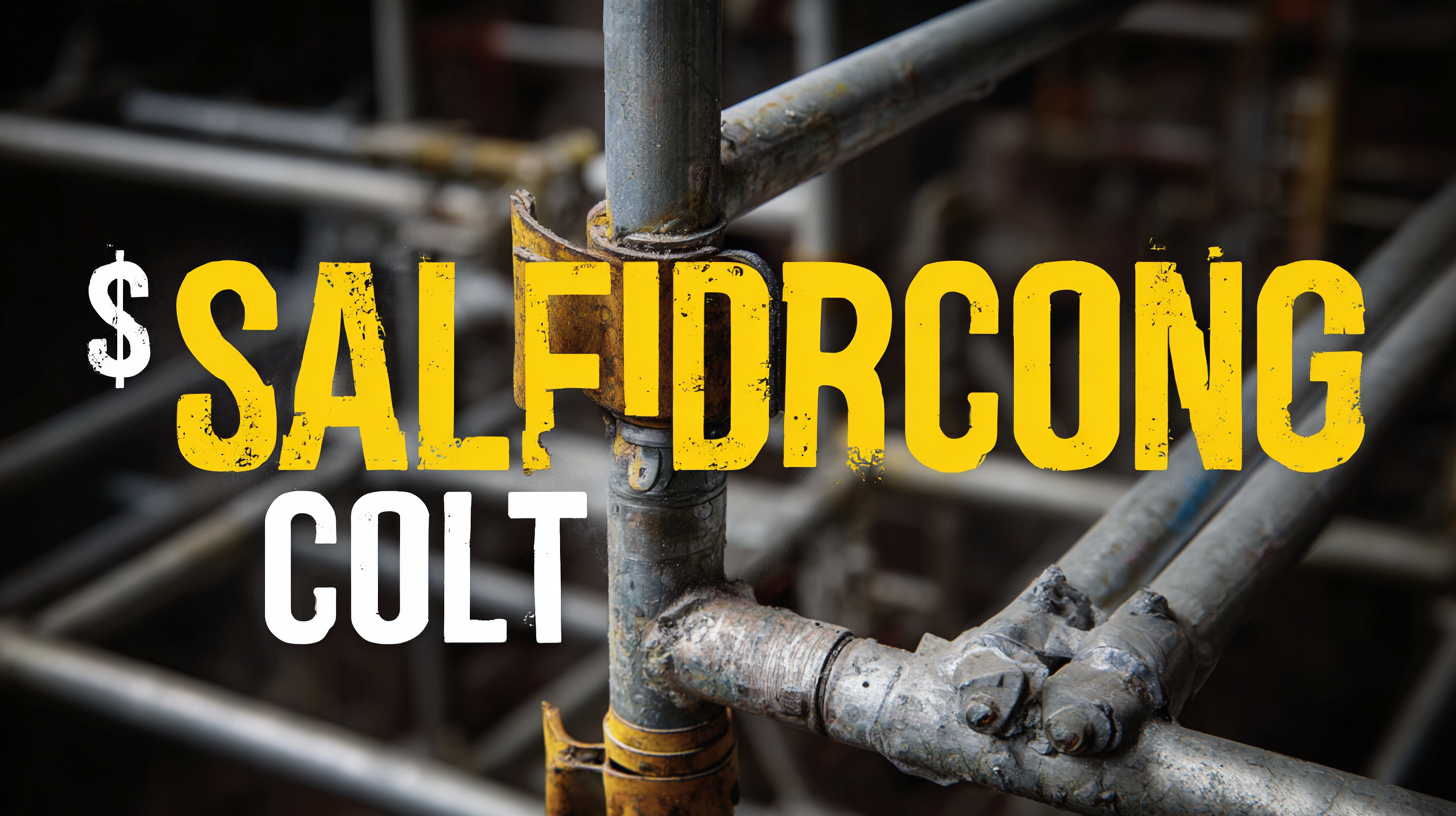 +86 18531741341
+86 18531741341
Leave Your Message
In the ever-evolving construction industry, the demand for innovative scaffolding solutions has surged, driven by the need for efficiency and cost-effectiveness. According to a recent report by MarketsandMarkets, the global scaffolding market is projected to grow from $55.1 billion in 2020 to $88.1 billion by 2025, underscoring the increasing importance of optimal scaffolding cost management. As more contractors and project managers seek to balance safety, speed, and budget constraints, understanding the nuances of scaffolding cost has become crucial.

Furthermore, integrating digital technologies into scaffolding processes can enhance productivity and reduce expenses, positioning companies to thrive in a competitive landscape. This blog will explore the future of scaffolding solutions, focusing on the best insights for managing scaffolding costs effectively while embracing innovative practices.
Emerging trends in scaffolding solutions are increasingly focused on cost efficiency, reflecting the industry's need to balance safety, reliability, and budget constraints. Advanced materials, such as lightweight alloys and composite materials, are gaining traction, providing scaffolding solutions that are not only more affordable but also easier to assemble and dismantle. This shift is particularly beneficial for projects with tight timelines and limited workforce availability, as these materials reduce labor costs while maintaining structural integrity.
Moreover, the integration of technology into scaffolding practices is revolutionizing how costs are estimated and managed. Digital modeling tools and cost analysis software enable contractors to forecast expenses more accurately and make informed decisions regarding materials and labor. Automation in the design and planning stages not only streamlines the process but also minimizes waste, further enhancing cost efficiency. As these trends continue to evolve, the scaffolding industry is poised to deliver innovative solutions that meet the financial demands of modern construction projects while maintaining high standards of safety and quality.
Traditional scaffolding methods have long been essential for construction projects; however, they come with a set of common issues that can hinder efficiency and safety. According to a report by the Occupational Safety and Health Administration (OSHA), approximately 4,500 injuries occur each year due to scaffolding accidents, highlighting the need for improved safety measures and practices. These incidents often stem from inadequately trained personnel and insufficient inspections, emphasizing the importance of rigorous training and comprehensive guidelines.
Moreover, traditional scaffolding can incur significant costs and time delays. The National Scaffold Association (NSA) notes that improper assembly and disassembly can lead to project overruns, costing construction firms up to 30% more than planned. Inefficient use of materials and labor further exacerbates this issue, making it crucial for companies to explore advanced scaffolding solutions that streamline operations. Innovative technologies and better cost insights not only enhance safety but also offer substantial savings, enabling construction professionals to deploy resources more effectively without compromising on quality.

The construction industry is undergoing a significant transformation, largely due to the advent of innovative technologies that enhance scaffolding cost insights. These advancements not only streamline project management but also enable contractors to make more informed decisions regarding material usage and labor allocation. With the integration of artificial intelligence and machine learning into scaffolding solutions, businesses can now analyze cost factors in real-time, leading to more accurate budgeting and reduced waste.
Moreover, the use of augmented reality (AR) and virtual reality (VR) in scaffolding design is revolutionizing the planning phase. By visualizing projects in a simulated environment, teams can identify potential cost overruns before they occur. This proactive approach not only improves safety and efficiency on job sites but also fosters collaboration among contractors, architects, and engineers. As these technologies continue to evolve, the future of scaffolding will undeniably be shaped by data-driven insights, leading to optimal cost management and enhanced project outcomes.
| Technology | Cost Insights ($/unit) | Efficiency Gain (%) | Sustainability Rating |
|---|---|---|---|
| Modular Scaffolding | 350 | 25 | A |
| Smart Scaffolding | 450 | 30 | A+ |
| Aluminum Scaffolding | 400 | 20 | B |
| Mobile Scaffolding | 300 | 15 | B+ |
| Bamboo Scaffolding | 200 | 10 | A |
In the construction industry, scaffolding is critical for ensuring safety and efficiency on job sites. However, projects often encounter various challenges, such as cost overruns, delays, and complexity in design. To address these hurdles, project managers should focus on developing tailored scaffolding solutions that are both cost-effective and adaptable to project demands. Leveraging technology, such as Building Information Modeling (BIM), can aid in optimizing scaffold design, ensuring that resources are allocated efficiently and reducing waste.
Another vital strategy is to foster collaboration among all stakeholders, from engineers to subcontractors. Open communication allows teams to share insights and propose innovative scaffolding solutions that align with project timelines and budget constraints. Regular site inspections and adaptive planning can also help identify potential problems early, allowing teams to implement corrective measures before they escalate into costly delays. By adopting a proactive approach, construction firms can enhance their scaffolding strategies, ultimately leading to more successful project outcomes.
The integration of data analytics into scaffolding solutions is set to revolutionize the industry, driving efficiency and cost-effectiveness. As businesses increasingly rely on data-driven decision-making, the scaffolding sector stands to benefit immensely from the insights generated through advanced analytics. By leveraging real-time data analysis, companies can optimize their resource allocation, project timelines, and safety measures, ensuring smooth operations and reduced overhead costs.
Emerging trends in data analytics highlight a shift towards sophisticated technologies such as artificial intelligence, which enhances predictive capabilities. This enables scaffolding providers to anticipate project challenges before they arise, transforming traditional approaches into proactive strategies. Furthermore, the rise of concepts like data mesh allows for decentralized data management, empowering teams to access and utilize insights relevant to their specific needs, thereby enhancing collaboration and innovation within the field. As the future unfolds, the role of data analytics in scaffolding development will be pivotal in shaping a more efficient and sustainable construction industry.

